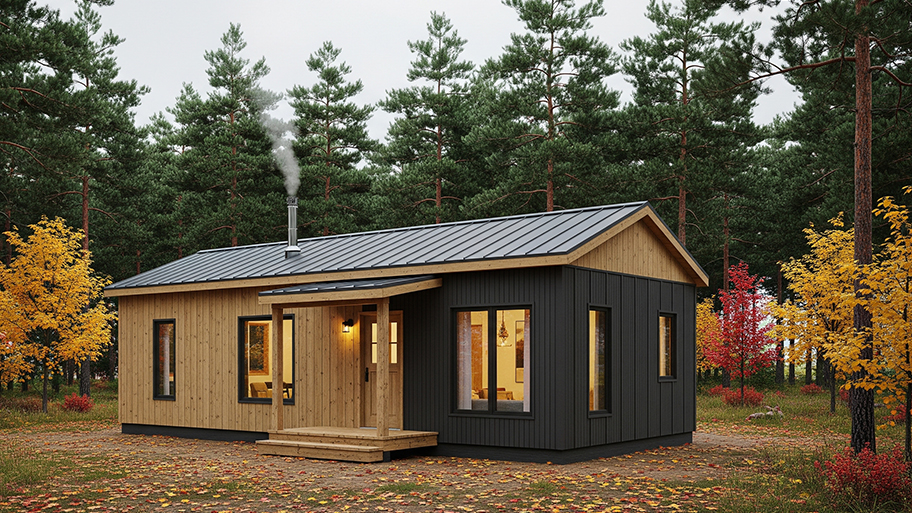
Modular homes are more affordable than stick-built homes, but by how much? Learn about modular home costs to see if they fall within your budget.
The average cost to build a green home is around $400,000, and most projects total somewhere between $200,000 and $600,000, depending on square footage, material quality, location, and more.


The size of your home and the quality of the materials are the most significant cost factors to consider.
Don’t forget to budget for land, site prep, and architectural and structural plans.
Investing in green features will cost more up front, but it can save you money over time on utilities.
Take advantage of government efficiency incentives and rebates to bring effective costs down.
The average cost to build a green home is around $400,000, but prices can sit as low as $140,000 or reach up to $3,500,000, depending on your location, the size of the home, the green components you include, and the fit and finish. On average, you’ll pay around $200 per square foot to build a green home.
The cost to build a green home on a per-square-foot basis averages $200, but even that can range widely. Per-square-foot prices can fall anywhere between $150 and $600, depending on your location and the type and quality of the components and materials you use. You’ll pay toward the upper end of that range for a luxury green home in high-cost states and near major metropolitan areas, while the lower-end range is a better estimate for rural areas in states with a lower cost of living.
| Home Size (Sq. Ft.) | Average Cost to Build |
|---|---|
| 750 | $150,000 |
| 1,000 | $200,000 |
| 1,500 | $300,000 |
| 2,000 | $400,000 |
| 2,500 | $500,000 |
| 3,000 | $600,000 |
The largest portion of your labor costs will go toward a general contractor or project manager, which is the professional that will often hire subcontractors for plumbing, electrical, and HVAC work. They will also carry out the general construction, including framing and installing siding, flooring, drywall, kitchens, bathrooms, and more.
General contractors charge between 10% and 20% of your total project cost, which puts the average general contractor charge for building a green home between $40,000 and $80,000 just to hire, coordinate with, and manage subcontractors. Most general contractors will charge by the project for a full house build, but if yours charges based on time, expect to pay between $300 and $500 per day. Note that these prices don’t include the cost of pouring foundations, framing, or other portions of the work that the contractor doesn’t sub out.
Pouring the foundation: $4,000–$15,000
Framing the structure: $1,400–$7,700
Installing the roof: $5,900–$13,200
Install drywall: $1.50–$3 per sq. ft.
Architects can charge anywhere from 5% to 15% of the total project cost to draw up plans for new construction, which puts the average total between $20,000 and $60,000 for a brand-new green home. These fees will include to-scale blueprints, schematics for mechanicals, and as-built plans for your GC to follow during construction.
Custom design and structural drawings: $20,000–$60,000
Drafting blueprints: $550–$1,900
As-built drawings: $700–$1,300
Landscape design: $700–$3,600
Building a home from the ground up will require many different professionals, whom you or your general contractor will need to hire. Below are some standard costs for each professional.
Foundation contractor costs: $4,000–$15,000
Landscape design costs: $2,000–$7,200
Solar installer costs: $18,000–$36,500
Energy auditor costs: $200–$700
Interior designer costs: $2,000–$15,200
Plumber costs: $10,000–$20,000
Electrician costs: $1,500–$10,000
HVAC contractor costs: $10,000–$15,000
The location of your new green home will play a major role in your total construction costs, as per-square-foot prices can reach as high as $600 in metropolitan areas like Manhattan and San Francisco, whereas the average national cost is around $200. You’ll also pay more to build in states with a higher cost of living, as labor costs scale accordingly.
| State | Green Home Cost |
|---|---|
| California | $579,000 |
| Florida | $410,000 |
| Georgia | $366,000 |
| Illinois | $382,000 |
| Michigan | $370,000 |
| New York | $494,000 |
| North Carolina | $391,000 |
| Ohio | $380,000 |
| Pennsylvania | $380,000 |
| Texas | $371,000 |
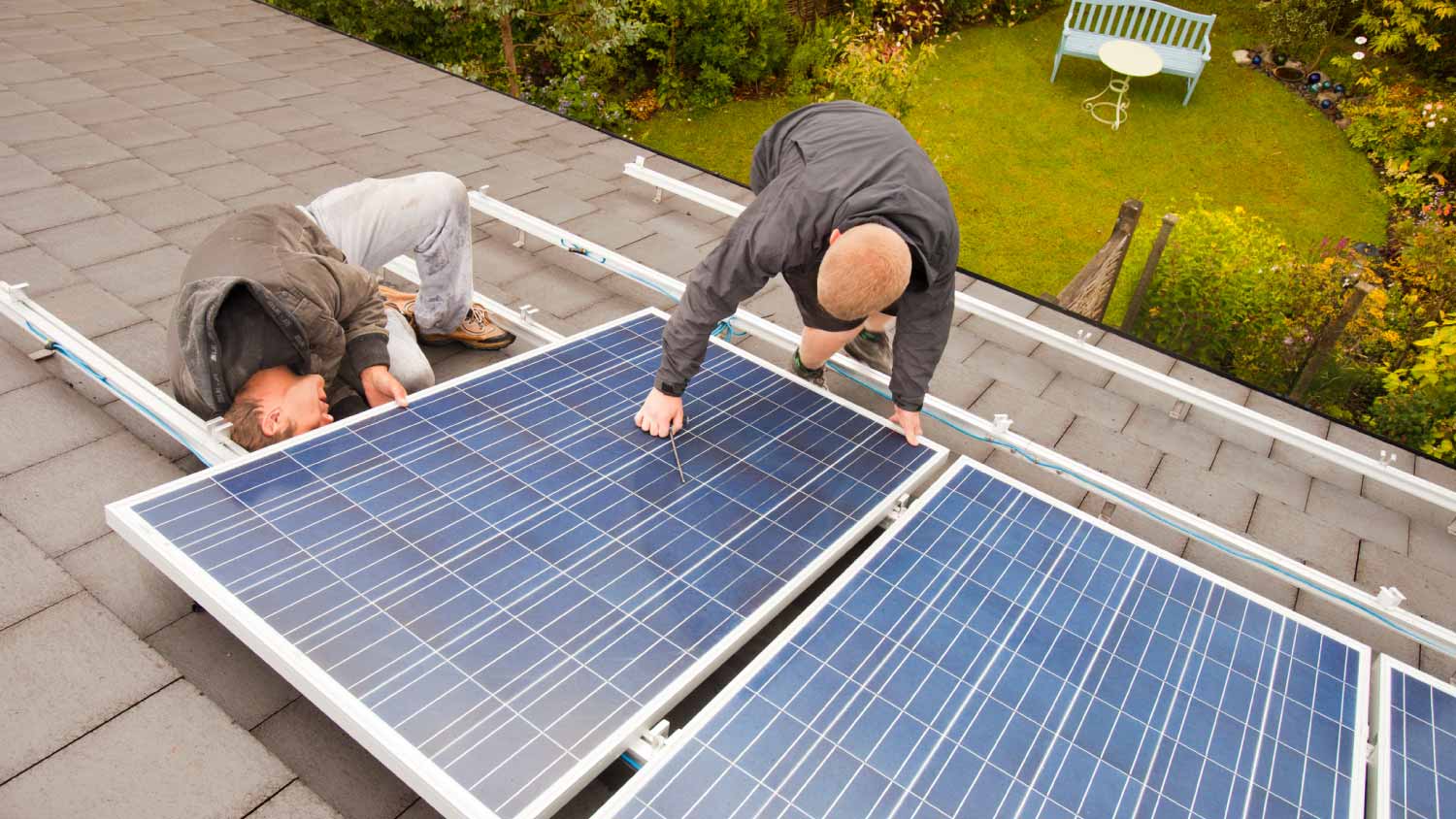
In addition to the major cost factors above, you should consider the following things that can also affect the cost to build a house that’s as efficient as possible.
If you’re developing land for the first time, you may need to pay to clear the plot, including removing vegetation, leveling the land, grading it for proper drainage, and tamping the soil to prepare for construction. Land clearing costs an average of around $3,750, but prices can go as high as around $15,000, depending on the size of the plot. Leveling land costs an average of $2,200.
You may also have to pay land survey costs before beginning, which can total around $500.
Materials account for between 50% and 60% of your total, so the choices you make every step of the way will have a major impact on your total cost to build a green home. Energy-efficient materials tend to be more expensive, although they pay for themselves over time in utility bill savings, and they have less of a negative impact on the environment. The table below includes pricing for some popular eco-friendly building materials.
| Material | Cost |
|---|---|
| Bamboo flooring | $7–$20 per sq. ft. |
| Ductless AC system | $2,000–$14,500 |
| Energy Star appliance package | $3,000–$10,000 |
| Fiberglass windows | $500–$1,500 each |
| LED light fixtures | $160–$1,000 each |
| Low-flow faucets | $150–$350 each |
| Metal roofing | $4–$30 per sq. ft. |
| Smart thermostat | $130–$300 |
| Smart window glass | $50–$150 per sq. ft. |
| Solar battery | $400–$15,000 |
| Structural insulated panels | $7–$12 per sq. ft. |
| Stucco siding | $2,200–$9,200 |
| Tankless water heater | $1,400–$3,900 |
| Window tinting | $300–$950 each |
Insulation is an important thing to get right in a green home, as it will help regulate temperature in your living space without calling on your HVAC system for more hot or cold air. Insulating a green home may begin while your contractor is pouring your foundation, or shortly after, in the form of sealant between building materials to prevent air seepage.
Green homes will also include insulation with an above-average R-value to decrease fossil fuel or electricity consumption for heating and cooling. The type of insulation appropriate for your green home build will depend on the climate in your area, and the cost of the insulation will fluctuate accordingly.
| Type of Insulation | Cost per Sq. Ft. |
|---|---|
| Cellulose | $0.60–$2.30 |
| Fiberglass | $0.30–$1.50 |
| Mineral wool | $1.40–$4 |
| Polystyrene | $0.25–$0.50 |
| Rigid foam board insulation | $0.25–$2 |
| Wood fiber | $4.25–$6.75 |
Your new green home will need a sturdy base to sit on, and a foundation will cost an average of $9,400 or between $5 and $37 per square foot. Prices can range from $1,200 to $33,000, depending primarily on the footprint of the home, but the type of foundation also matters.
| Foundation Type | Cost (per Sq. Ft.) |
|---|---|
| Basement | $20–$37 |
| Crawl space | $6–$18 |
| Pier and beam | $6–$12 |
| Slab | $5–$16 |
Installing a new roof costs $9,500, on average, but you could pay significantly more if you’re looking for a roofing option that’s more sustainable than asphalt shingles. Many people who plan on building a green home will opt for metal roofs, slate roofs, clay tile, or even solar shingles, as all are more sustainable than traditional asphalt shingles. Prices can increase up to $75,000 for the more expensive options.
| Roof Type | Average Cost |
|---|---|
| Asphalt shingles | $10,500 |
| Clay tiles | $17,500 |
| Metal | $11,700 |
| Solar shingles | $35,000 |
| Slate tiles | $13,400 |
A big part of making a home sustainable is automating it to help conserve energy. This can include things like motion sensors for lights, timer switches for bathroom fans, smart thermostats, smart electrical panels, leak detection, water shut-off systems, and more. Depending on the level of automation you want in your home, you could pay between $1,000 and $5,000 for the additional equipment and installation.
Building a new home will require permits no matter where you live, and you can expect to pay somewhere between $500 and $2,000 for new construction permits. Your general contractor might include this line item in their estimate, so double-check before budgeting for this separately.
If you’re debating whether to convert your existing home to a green home or demolish the existing structure and start over with a custom home build, the cost difference might help make your decision easier. While you’ll pay an average of around {{nationalAvgCost}} to have a custom homebuilder near you build a brand new green home, converting your existing structure to a more eco-friendly one could cost closer to $150,000.
There are a few things to consider before deciding, though. First, building a home from the ground up will give you far more freedom to maximize the positive impact on the environment, from choosing more sustainable building materials to integrating the latest environmentally-friendly tech into every inch of your home.
If you just want to inch closer to the net-zero mark for your existing home, you can often achieve that by making some sustainable home improvements. Those include installing solar panels, solar batteries, an EV charger, new insulation and air sealing, energy-efficient windows and doors, smart lighting, Energy StarⓇ-certified appliances, and Energy StarⓇ-certified HVAC equipment.
Building a green home is even more challenging than building a regular home, so you should leave this job to a collection of professionals. You should expect to pay anywhere between $200,000 and $600,000 in total to build a green home. You can, however, save between $20,000 and $60,000 by being your own general contractor and hiring individual experts. Just note that this involves a lot of time and effort, so hiring a homebuilder to handle this is worthwhile.
With green home construction prices reaching up to $3,500,000, keeping costs as low as possible is going to be a top priority for most people. Luckily, there are many things you can do to keep prices down.
Buy a plot that’s cleared and level. Your savings can begin before you even start building. You could save between $5,000 and $15,000 by buying a plot that’s cleared, level, and ready to build.
Buy a plot that’s already hooked up to electrical and sewer connections. You can also save between $15,000 and $21,000, on average, if you buy a plot to build that’s already connected to the electrical system and is either connected to the municipal sewer or has a septic system installed already.
Act as your own general contractor. While you won’t be able to do most of the work yourself, you can coordinate with all of the individual contractors if you’re up for it. It’s time-consuming and demanding, but it could save you between $20,000 and $60,000.
Choose more affordable building materials. The quality of the building materials you choose can have a major impact on pricing. Opt for more affordable materials for up-front savings, or choose high-quality materials for longevity and savings over time.
Invest in solar panels. Adding solar panels to your green home will add between $18,000 and $36,500 to your build costs, but they often pay for themselves and then save you far more than that on your electric bills over time. Plus, going solar is one of the best ways to reduce your carbon footprint.
Take advantage of efficiency incentives and rebates. Federal, state, and local governments, as well as utility companies, often offer incentives, tax credits, and rebates for energy efficiency upgrades and green building. Check the Database of State Incentives for Renewables & Efficiency (DSIRE) for information on local perks to save.
Get multiple quotes. At every step of the way, get quotes from three experts to compare based on cost, materials, and labor to find the best value.
Building a green home costs an average of $400,000, and if you were to turn around and sell it right away, you’d very likely turn a profit. That means the ROI for green home construction is 100% or more.
The good news is that you should also see an upside if you plan on living in your home for years before you sell. Not only will your property likely appreciate, as real estate has historically, but you’ll enjoy lower heating and cooling costs, lower electric bills, and lower water bills as a result of your eco-friendly efforts. Compared to building a standard home, you should see a higher ROI over time, too.
Home is the most important place on earth, which is why Angi has helped more than 150 million homeowners transform their houses into homes they adore. To help homeowners with their next project, Angi provides readers with the most accurate cost data and upholds strict editorial standards. We extensively research project costs to develop the pricing data you see, so you can make the best decisions for you and your home. We rely on reputable sources, including the U.S. Bureau of Labor Statistics, academic journals, market studies, and interviews with industry experts—all to ensure our prices reflect real-world projects.
Want to help us improve our cost data? Send us a recent project quote to [email protected]. Quotes and personal information will not be shared publicly.
From average costs to expert advice, get all the answers you need to get your job done.

Modular homes are more affordable than stick-built homes, but by how much? Learn about modular home costs to see if they fall within your budget.
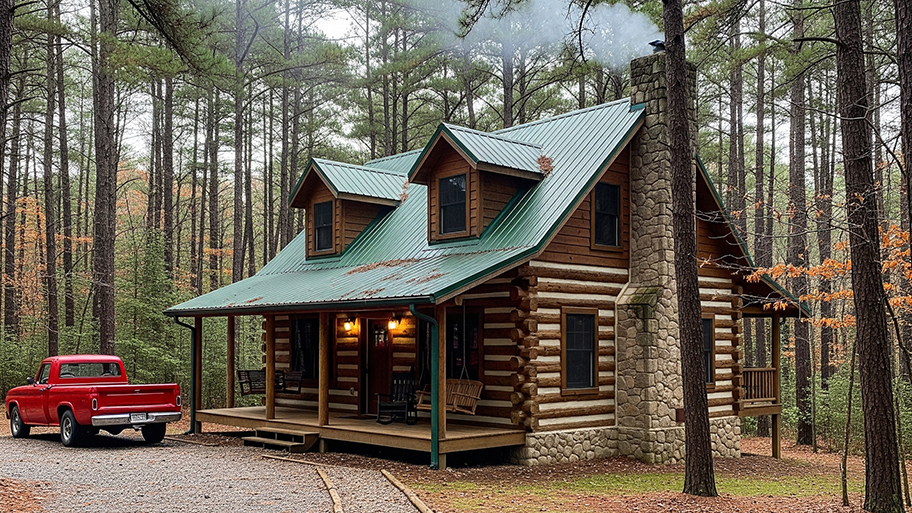
Log cabin costs vary depending on the size of the cabin, the location, and the cabin style. This guide will help you figure out the true cost of a log cabin.
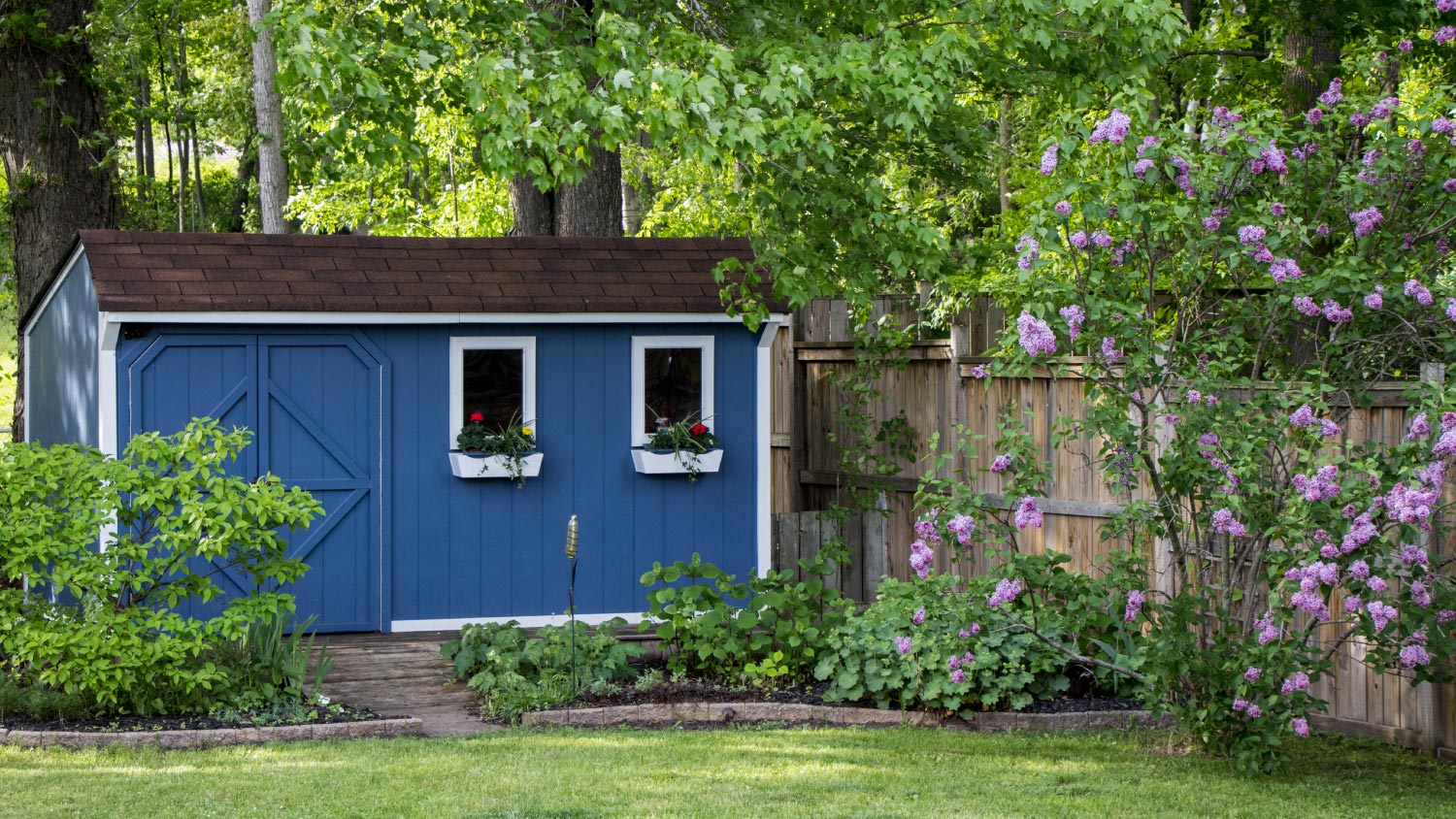
Discover the outbuilding cost for your property. Learn about average prices, cost factors, and ways to save when building or renovating an outbuilding.
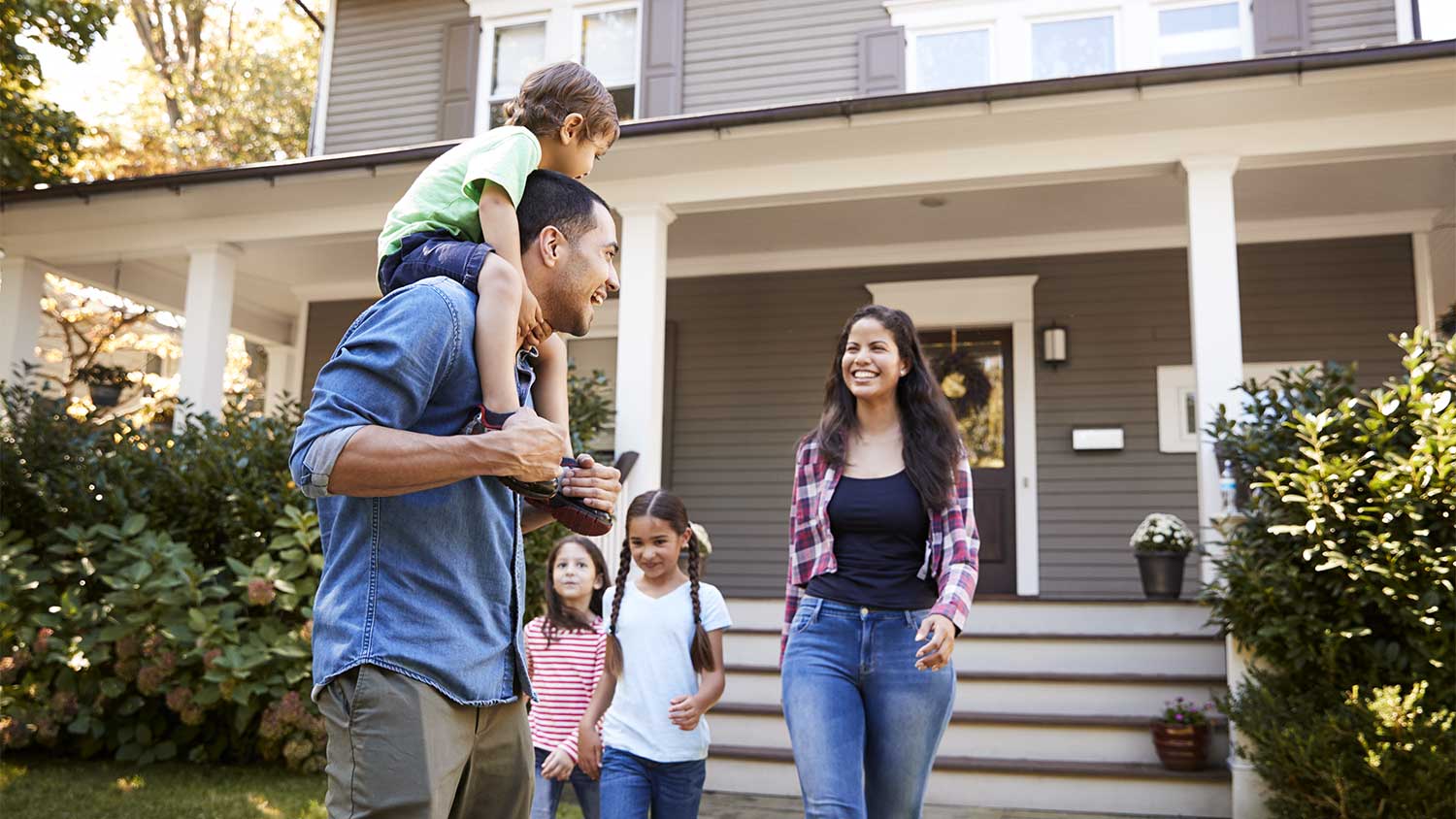
Discover the cost to build a fourplex. Learn about average prices, key cost factors, and ways to save when planning your fourplex construction project.

Adding a second story to a house is a great way to get the space you need without uprooting your family. Find out everything you need to know here.
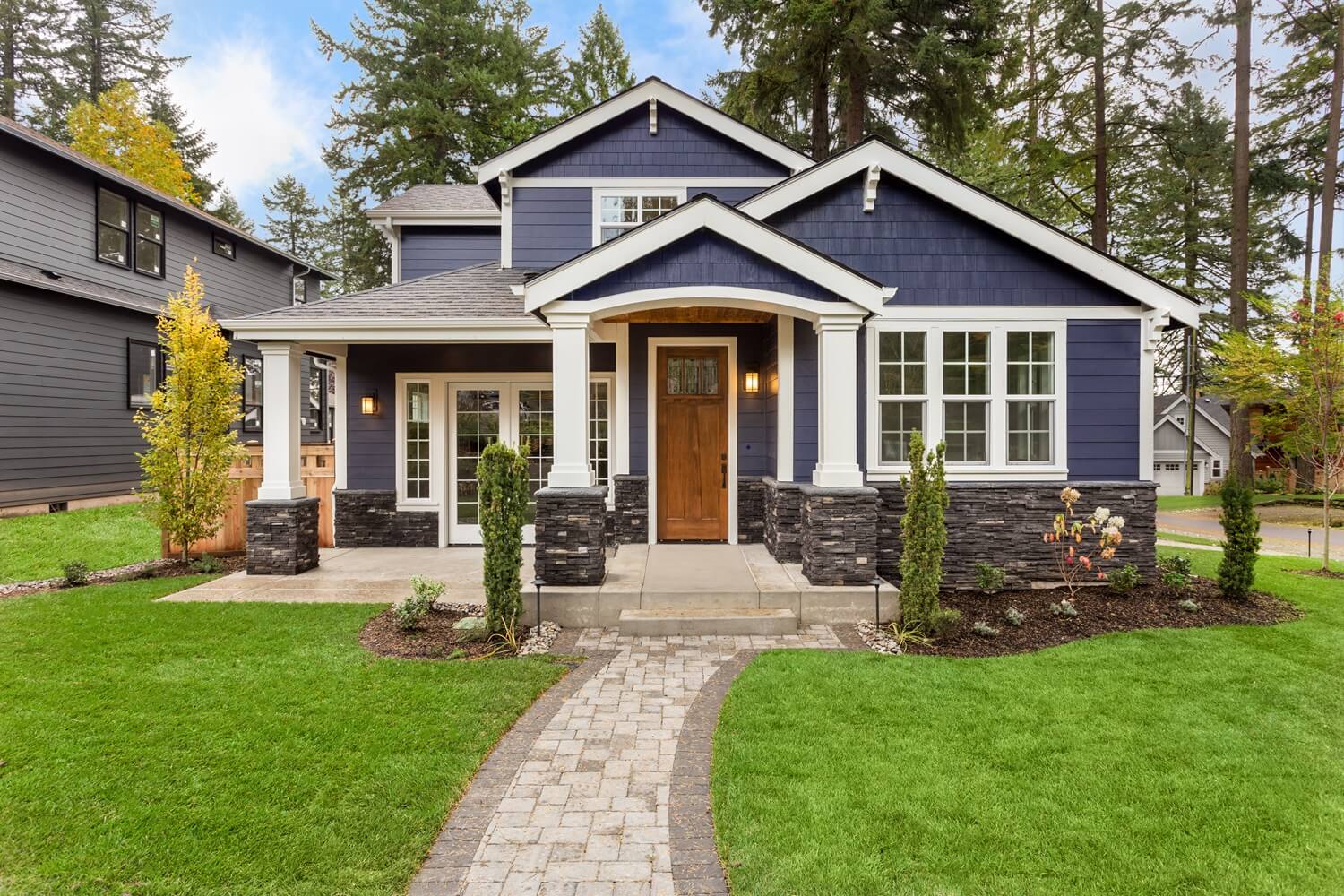
Building a house is a complex process, and it’s important to get it right. Learn how to build a house to help make the process easier and more straightforward.